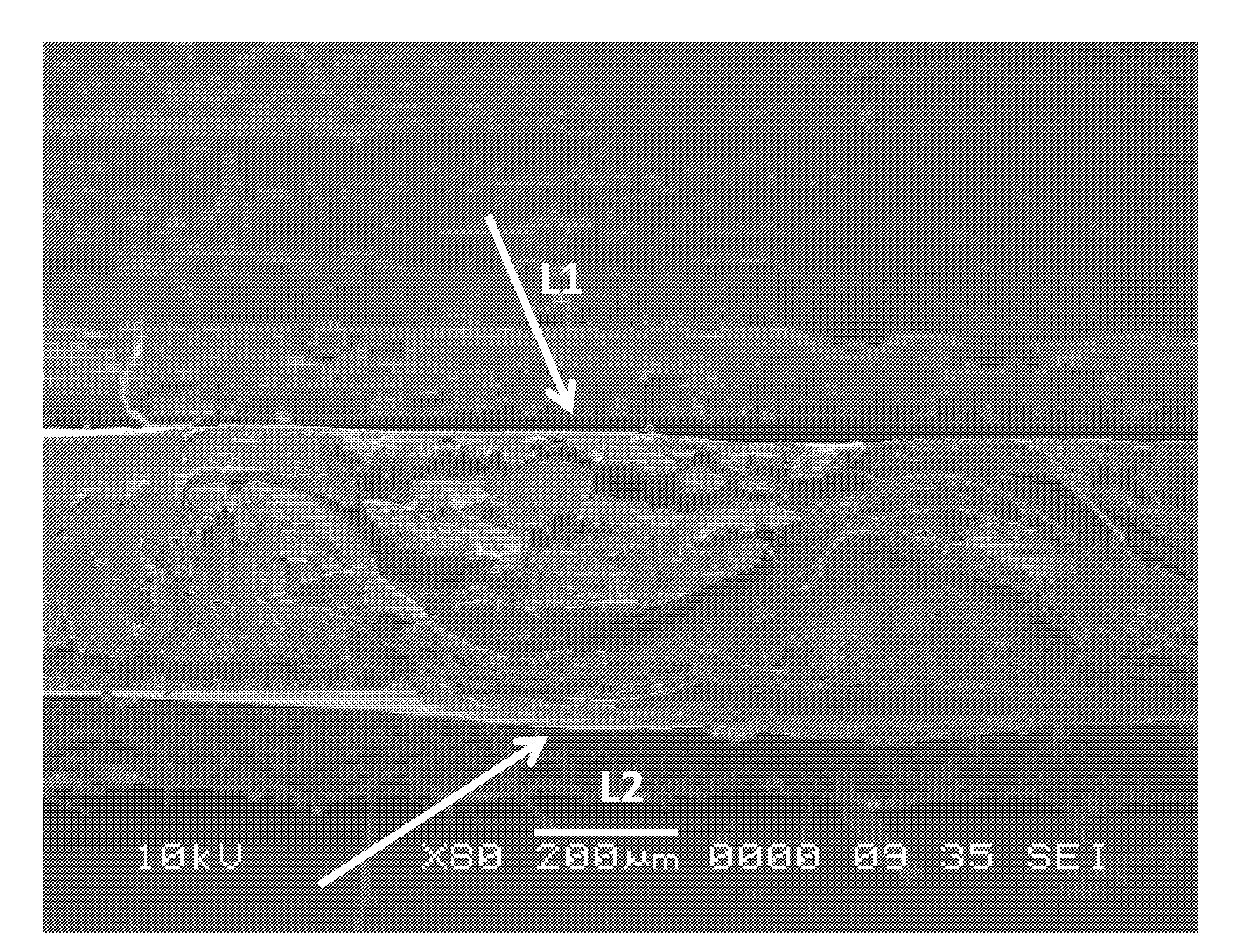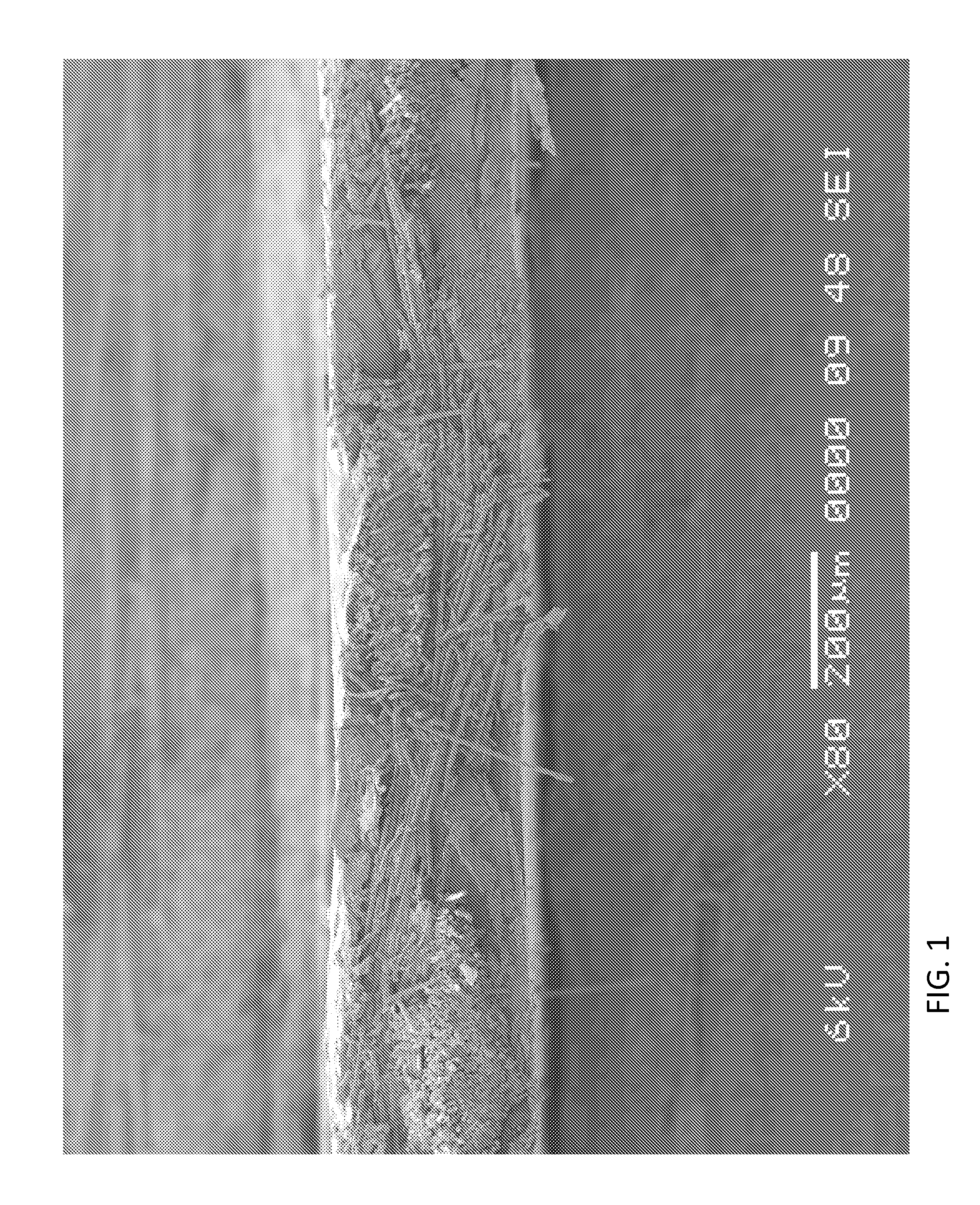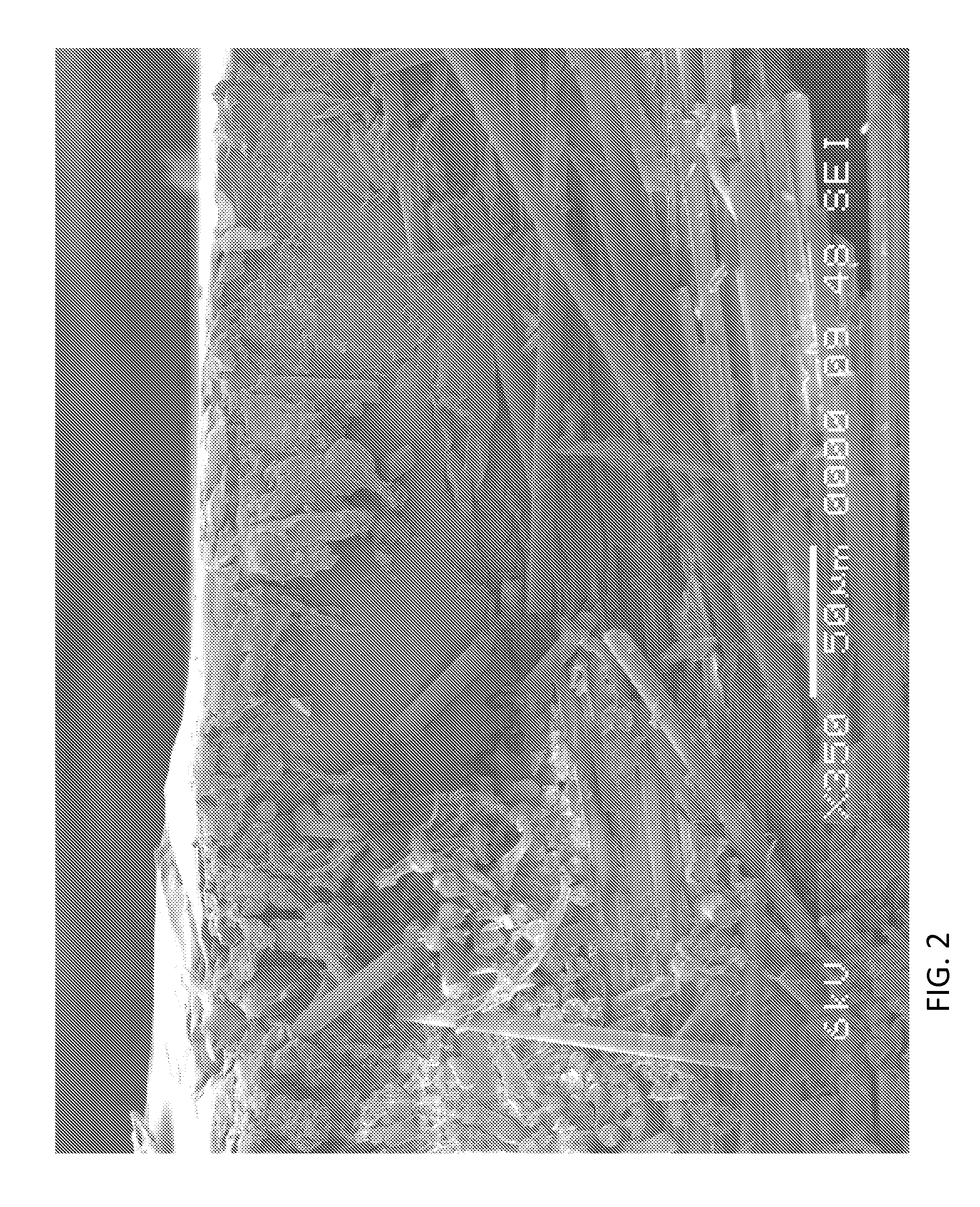Flexible laminate structure
- Summary
- Abstract
- Description
- Claims
- Application Information
AI Technical Summary
Benefits of technology
Problems solved by technology
Method used
Image
Examples
Embodiment Construction
[0026]The flexible, non-porous laminate film structure described herein is useful in the processing of commercial products over a wide range of viscosities, temperatures, and pHs. For instance, the laminate film structure is suitable for uses including but not limited to food preparation conveyor belts, expansion joint materials, flexible ducting and for the transmission of gaseous fluids.
[0027]The herein described laminate film structure is useful as a replacement for conventional PTFE-coated fiberglass composites. The herein laminate structure is, in certain embodiments, formed of a woven substrate of a PTFE fluorocarbon fiber or PTFE-PFA hybrid fluorocarbon fiber that has been heat stabilized at high temperature which is laminated to a pre-formed PFA film at a temperature between the melt point of PFA (582° F., 305° C.), and that of PTFE (627° F., 330° C.). The roughly 45° F. (25° C.) difference allows for melting of the PFA in the film and the yarn to occur at a temperature safe...
PUM
| Property | Measurement | Unit |
|---|---|---|
| Temperature | aaaaa | aaaaa |
| Temperature | aaaaa | aaaaa |
| Time | aaaaa | aaaaa |
Abstract
Description
Claims
Application Information
 Login to View More
Login to View More - R&D Engineer
- R&D Manager
- IP Professional
- Industry Leading Data Capabilities
- Powerful AI technology
- Patent DNA Extraction
Browse by: Latest US Patents, China's latest patents, Technical Efficacy Thesaurus, Application Domain, Technology Topic, Popular Technical Reports.
© 2024 PatSnap. All rights reserved.Legal|Privacy policy|Modern Slavery Act Transparency Statement|Sitemap|About US| Contact US: help@patsnap.com










